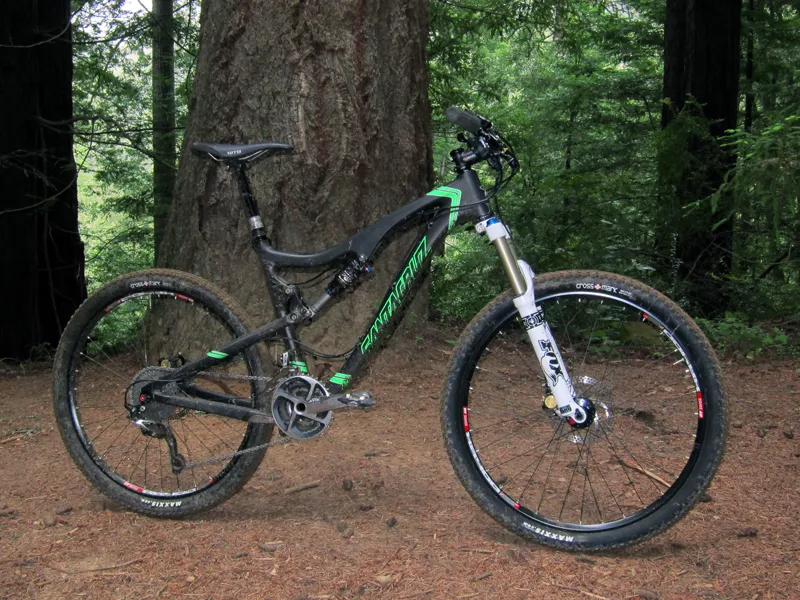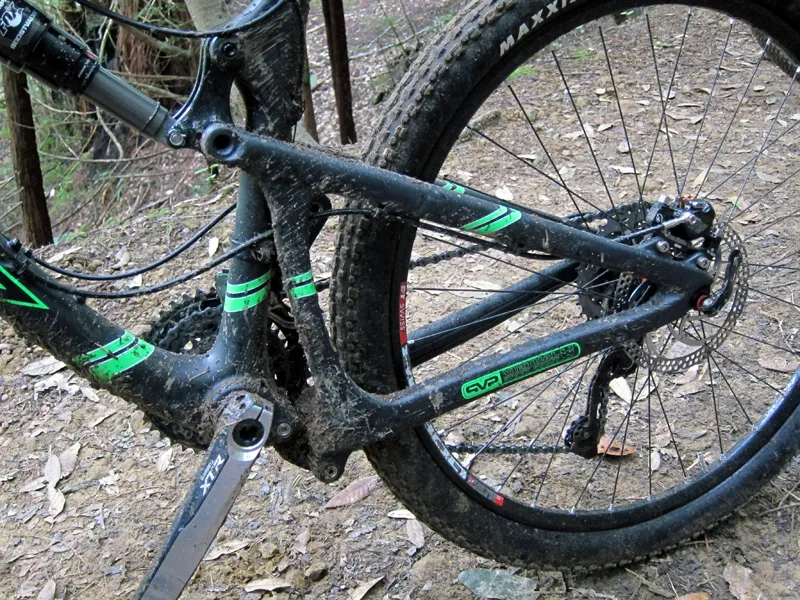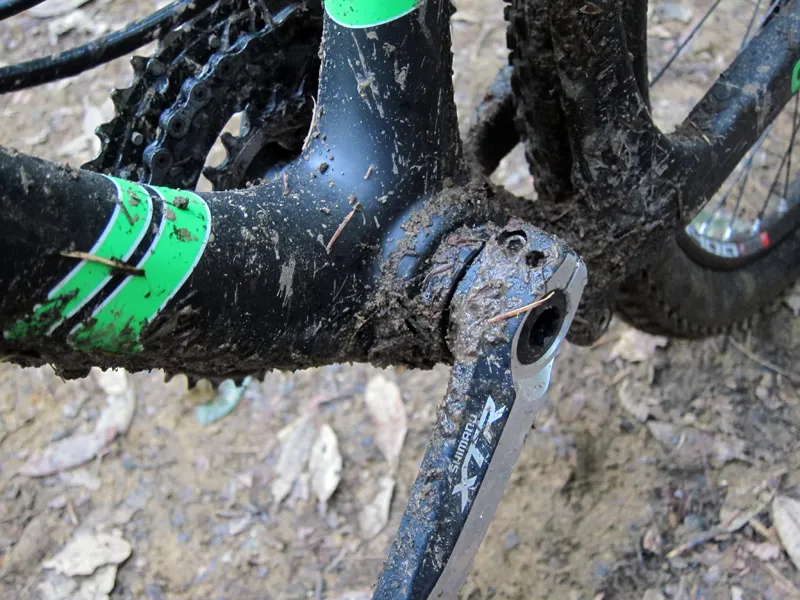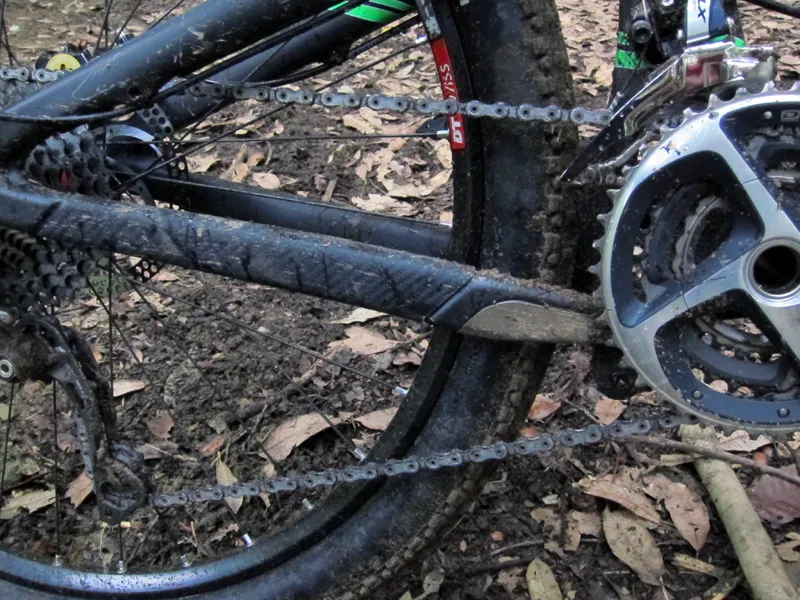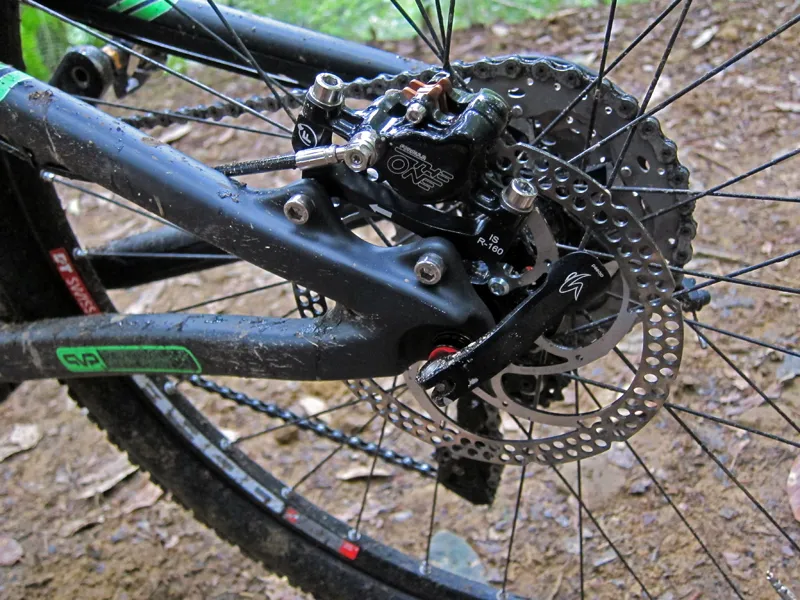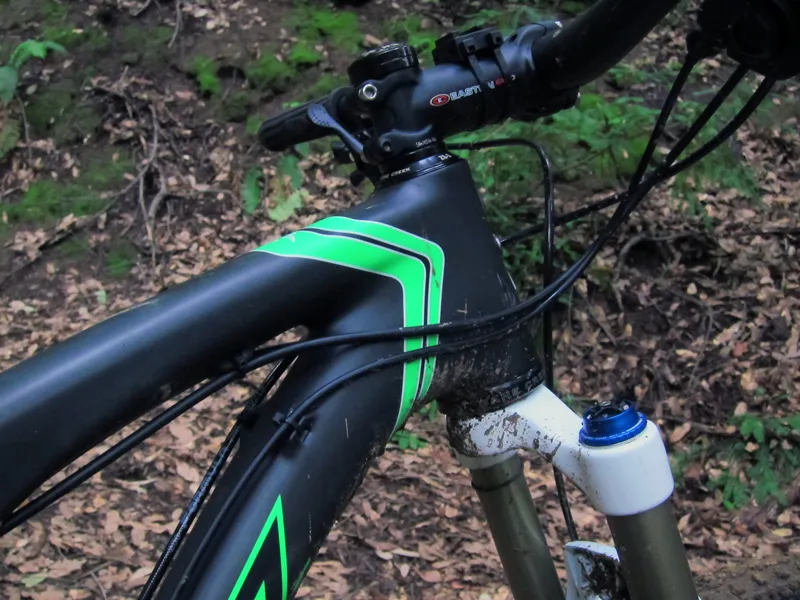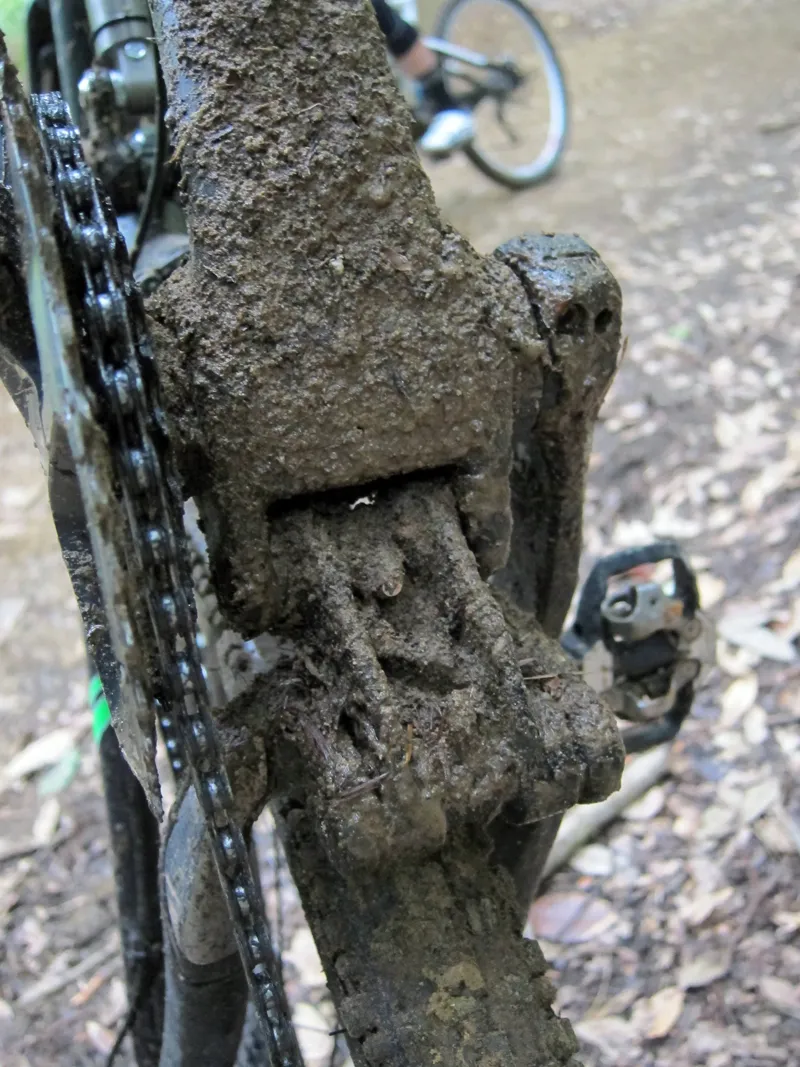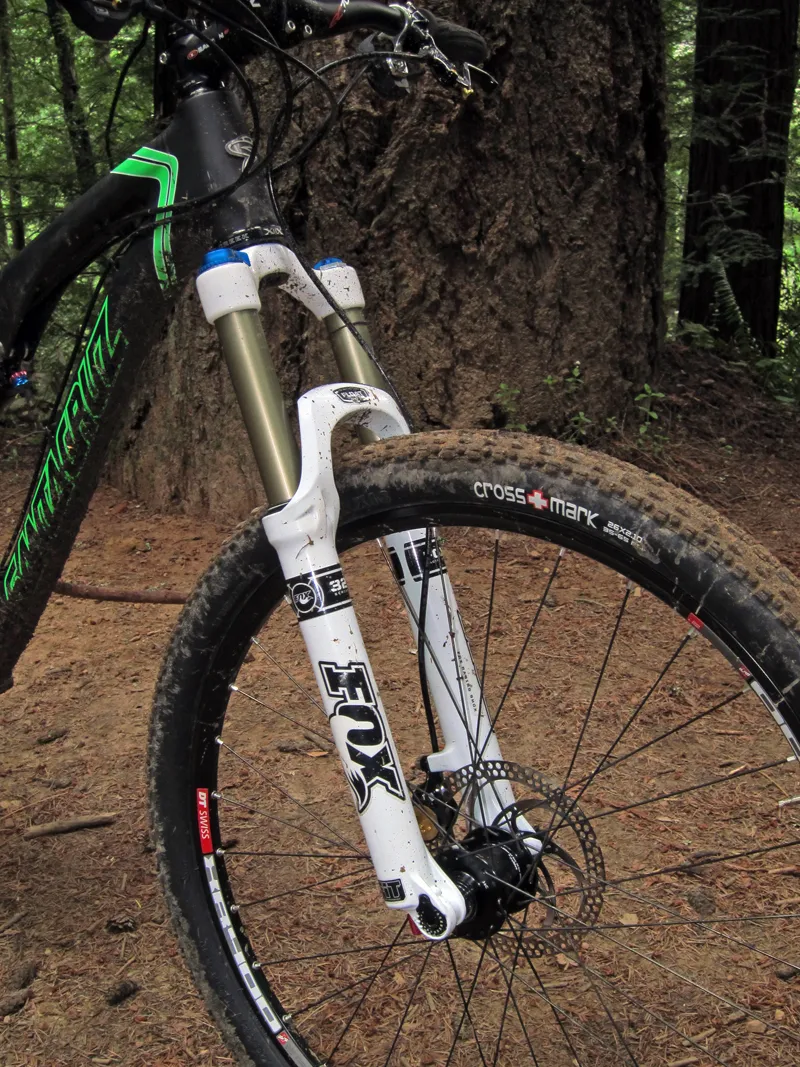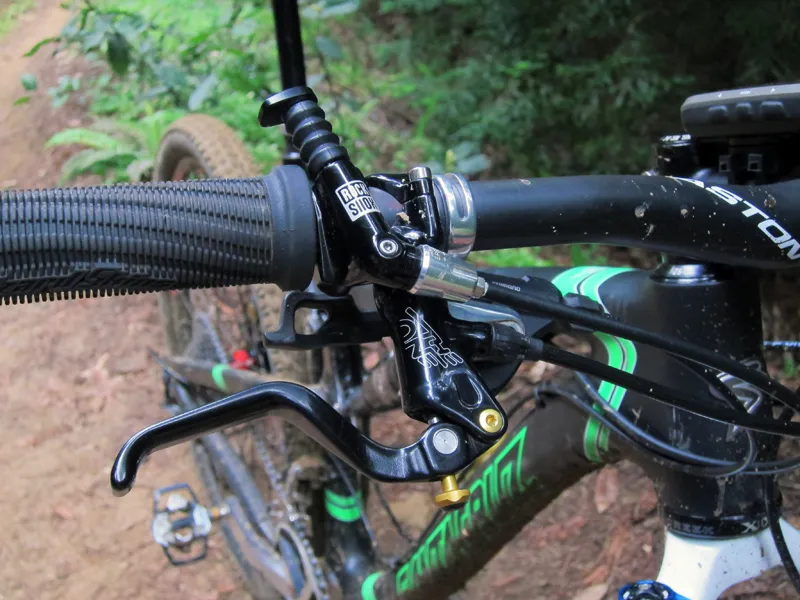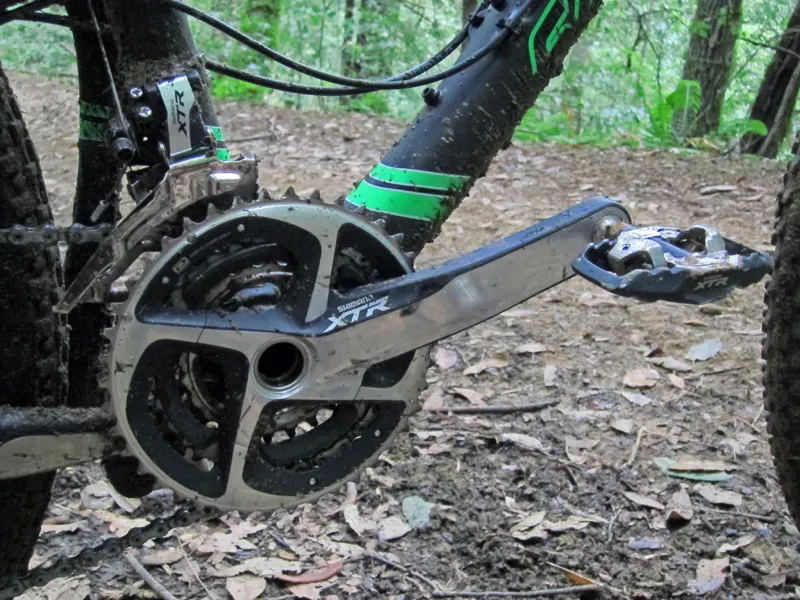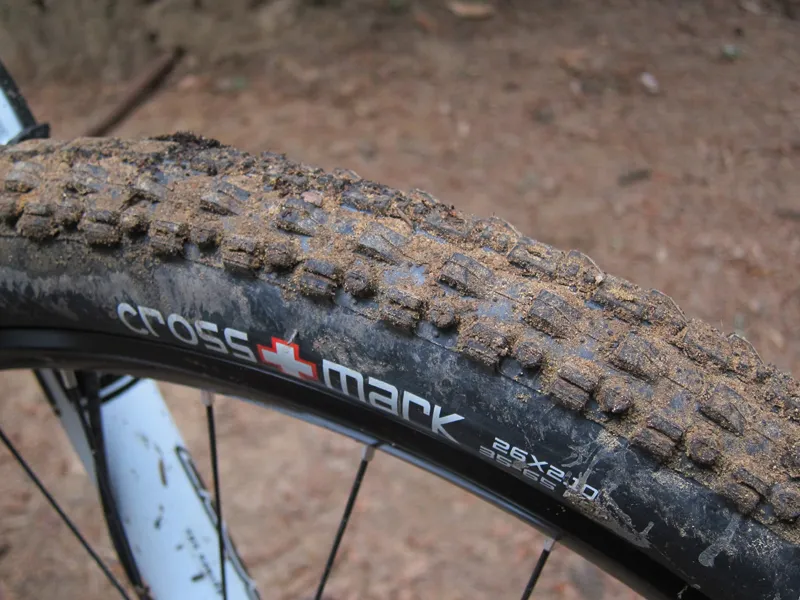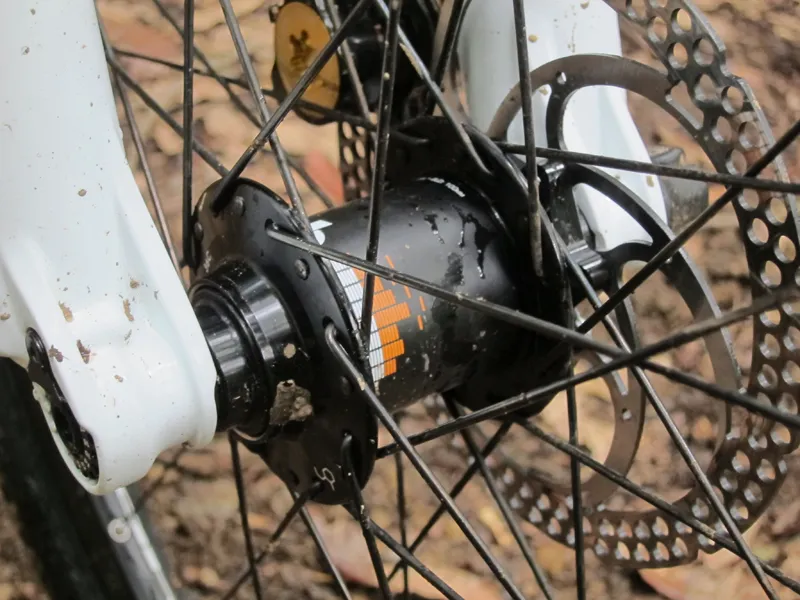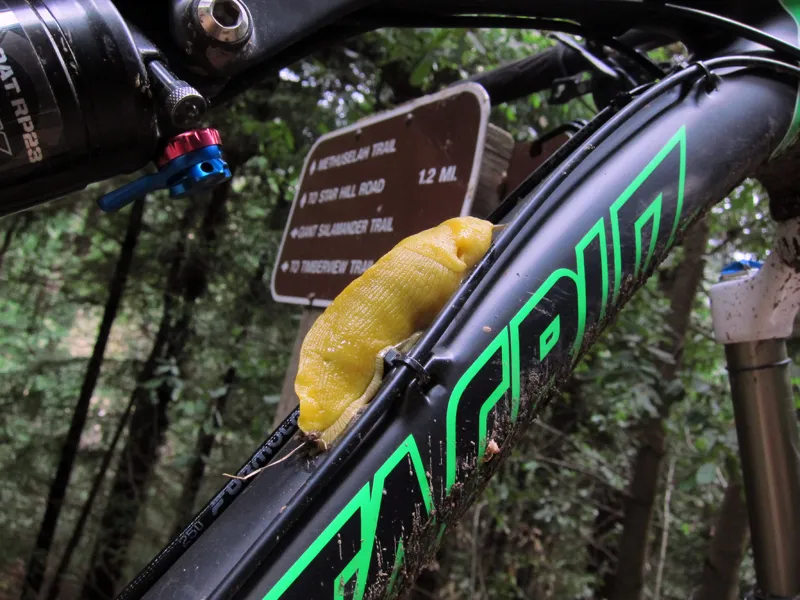More than weight, stiffness, suspension performance or any other metric, the Santa Cruz Blur TRc's defining characteristic is its unique frame geometry. Unusually slack and low for a 130mm-travel bike, with a 68° head tube angle and a bottom bracket shell that's just 333mm (13.1in) off the ground, the TRc flies fast and low – feeling more like a slalom bike than a trail rig. It's quirky and definitely not for everyone but those same idiosyncracies make it an immensely fun, speedy and entertaining bike that put a massive grin on our faces.
Ride & handling: Ride it like you stole it to extract the most enjoyment
Few trail bikes we've ridden are as happy and confident being aggressively thrown into turns as the TRc. While it's a fine bike when just puttering along, it comes into its own when you're going full gas on downhill or fast, rolling terrain. The low center of gravity is obvious from the first pedal stroke – it's brilliant for sinking your weight into corners and extracting the most grip out of the tires, and it also makes for ultra-quick transitions in twisty terrain.
The TRc shares its slack head tube angle with Santa Cruz's longer-travel Blur LT but size-for-size, the TRc has a longer front center and wheelbase for an even more stable and glued-to-the-ground feel. Unlike more traditional trail or cross-country bikes that require you to set your weight back a bit to get the most out of steep, fast or technical downhills, you can simply keep your weight centered on the TRc and hang on for dear life.
Add in the utterly planted and fairly linear VPP suspension design that gobbles up stutter and square-edged hits with equal aplomb and the TRc is most at home on fast, twisty and modestly technical terrain with lots of medium-size drops and jumps. It won't mindlessly devour big features like longer-travel bikes but skilled riders who are able to deftly flick around or leap over things will find themselves absolutely flying.
Bermed corners are especially fun – just get the wheels to drift, find your traction and rail out the other end without giving any of the hooliganism a second thought. Feel free to lean it over hard, too, as the level of enjoyment is almost directly correlated to how closely you can come to scraping the end of the bar on the ground.
That unique geometry does carry with it some expected pitfalls, though. The combination of that very low bottom bracket, full-length 175mm crankarms and 130mm of wheel travel means that at full bottom-out, the pedals are nearly scraping the ground. Pedal strikes on rocky terrain were common during testing and we had to mentally adjust our expected ground clearance when clearing logs and boulders to avoid knocking off chainring teeth.
It's so low that we occasionally dragged a pedal when pedaling through the apex on smooth, tight uphill switchbacks, and riding through ruts proved particularly challenging – as we discovered during the last leg of testing at Wilder Ranch in Santa Cruz's California backyard. With so little leeway, we frequently dug our pedals into the sides of the rut while trying to pedal uphill and had to be especially careful when coming back out to avoid catching a crankarm and launching ourselves off the side of the trail.
That slack front end that's so awesome at high speed can also be a handful at the other end of the spectrum as the wheel wants to flop over if you're not diligently working to keep things pointed straight. This is by no means a deal breaker but let's just say we were thankful of the extra leverage provided by the generously wide handlebar as the climbing got tougher.
Caveats aside, what makes the Blur TRc truly special is that you don't have to rely on gravity to enjoy the slalom-like handling – it rides like a play bike but pedals and fits like a true cross-country race machine. Actual frame weight with shock for our medium tester is just 2,230g (4.92lb), allowing for a complete build that's well within high-end cross-country race standards. Even so, overall stiffness is excellent with a balanced feel from front to rear and a reassuring girder-like solidity when pinballing through rock gardens.
Pedaling efficiency is also very good overall, though still not quite as good as better dw-link designs. The TRc's second-generation VPP rear end rarely found us seeking the ProPedal platform damping lever on the Fox Float RP23 rear shock on climbs and the highly refined pivot geometry requires very little compression damping to keep monkey motion in check in most situations, thus adding to the supple suspension performance and helping to maintain traction on loose ascents.
Dropping into the granny gear produces more suspension movement, though, and we generally flicked the ProPedal dial into the firmest setting in those situations to help make the most of our efforts. Santa Cruz have reduced the chain growth on this latest VPP design, so kickback is really only noticeable on the most violent of impacts and in certain gear combinations. And in case you're wary of an overly short and tall front end, keep in mind that Santa Cruz have lifted the rider position from their racier Blur XC.
Frame: Lightweight with excellent stiffness despite the notable lack of integration
New construction techniques, using a variety of internal mandrels developed with Santa Cruz's overseas manufacturing partner, yield better internal finish quality and more efficient use of material on the TRc, allowing for lighter weights without sacrificing stiffness or strength in the process. The bike's weight is quite impressive, considering what this thing is meant to handle (and what we actually put it through).
Carbon fiber is used for the entire front and rear triangles, and carbon is also used for the compression molded upper suspension link, rear brake tabs (with faceable aluminum inserts) and rear dropouts. The bottom bracket shell gets a threaded aluminum insert, and the alloy lower suspension link gets a pair of grease ports for easy servicing – a good thing since it's in the direct line of fire of spray coming off the front wheel.
As with previous carbon Santa Cruz frames, pivot bolts are titanium all around and the sealed cartridge bearings are affixed with secure, creak-free expanding collet hardware that keeps everything locked in place. Despite lots of water and mud during our six weeks of testing, we didn't have to use the grease ports (the one creak we did encounter was eventually traced to the rear wheel).
Santa Cruz have consciously steered away from any sort of integrated or oversized bottom bracket, through-axle rear dropouts or molded-in headset bearing seats – there is a tapered front end, though – and while that may add a few grams, our on-trail testing proved that frame rigidity doesn't seem to have suffered much, if at all. One thing to keep in mind, though: like Santa Cruz's other frames (alloy or carbon), the Blur TRc only carries with it a two-year warranty.
Equipment: Cross-country fast and all-mountain tough but in need of more capable rubber
Santa Cruz offer the TRc as a frame only or in a trio of preconfigured builds. Ours came with the top-shelf Shimano XTR Trail package and not surprisingly, there were few complaints. It was also very light at 11.08kg (24.43lb) without pedals but with a RockShox Reverb dropper seatpost added in place of the standard ultralight Thomson Masterpiece.
The XTR Trail transmission is virtually flawless, with ultra-smooth and precise shifts front and rear – even under power – and just the right amount of tactile feedback at the shift paddles. Some might debate the wisdom of speccing a 3x10 drivetrain in lieu of the lighter 2x10 package to go along with the svelte chassis but for most riders, this package will be spot on and more fitting with the bike's wide range of capabilities.
On our bike, the outstanding XTR disc brakes were substituted for Formula's The One stoppers. While fantastically powerful and with excellent modulation, we had issues getting the bulky clamps to play with the rest of the controls, the lever reach never felt just right, and we had occasional issues with pad retraction. Santa Cruz have since updated the build kit with the matching XTR units with their more compact (and arguably better-feeling) levers.
Wheels are custom builds using mostly DT Swiss bits, including XR400 alloy rims, Competition butted spokes and 240s rear hub. Tension was even all around and the wheels held up well during testing with no truing required – even after repeatedly slamming them into jagged rocks in various corners of Colorado. Santa Cruz sub in a Chub 15mm through-axle front hub, though, and while it worked just fine, it's a visual mismatch with the rear. We were also disappointed that a bike at this price didn't come with wheels that were tubeless-ready out of the box.
The stock Maxxis CrossMark tires were also a bit of a letdown. While light and fast rolling with their tight, low-profile tread, they're nervously sketchy on anything remotely loose. The hard rubber compound doesn't offer much grip on bare rocks or roots, either. We ended up swapping to a set of WTB Bronsons, which provided much better purchase on all ground types and more predictable drift characteristics that were more fitting with the TRc's personality.
The front end of the bike was finished off with an Easton EA70 forged aluminum stem and EC70 low-rise carbon bar – no complaints from us there as the combination is stiff (but not too stiff), light and secure. The stock seating area included a WTB Silverado saddle (good for those who like flat profiles) and a Thomson Masterpiece seatpost. Some riders will be disappointed that Santa Cruz don't include a dropper post as standard equipment but we could go either way here, depending on the bike's intended use.
Capping the package is a custom 130mm-travel version of Fox Racing Shox's 32 F-Series FIT RLC with 15mm through-axle dropouts. It's light, amply stiff in this length and, as we've noted in the past, offers outstanding control in a wide variety of demanding situations thanks to the highly refined FIT damper guts. In this configuration, there's really no need for a travel-adjust fork like the TALAS and for the most part, we didn't miss the smoother-running Kashima stanchion coating, either.
Conclusion: A niche bike, but boy is it a fun little niche
Santa Cruz openly admit that the Blur TRc isn't for everyone – in fact, the company basically made it for themselves. But if you can deal with the ultra-low bottom bracket and are okay with putting in a bit of extra steering work on the climbs, there's an awfully big payout on the way back down. Race it, ride it or just generally thrash the thing – chances are you'll be giggling the whole way.
